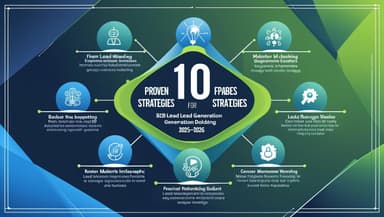Boosting Productivity: A Guide to Business Process Automation
Imagine a workplace where routine tasks take care of themselves, employees focus on meaningful work, and productivity soars without increasing stress.
That’s not a dream—it’s the promise of business process automation (BPA). In today’s fast-paced business environment, organizations are constantly looking for ways to do more with less, streamline operations, and improve efficiency. Automation isn’t just a technology trend; it’s a strategic approach that allows companies to save time, reduce errors, and empower employees to focus on what truly matters.
In this guide, we’ll explore how business process automation can boost productivity, the types of processes you can automate, and how modern businesses are leveraging intelligent solutions to drive growth.
What is Business Process Automation?
Business process automation involves using technology to automate repetitive, rule-based tasks in your workflows. Instead of relying on manual input, BPA tools handle tasks such as data entry, report generation, approvals, notifications, and even customer communications.
The result? Fewer errors, faster turnaround times, and a more productive workforce. While BPA is often associated with large enterprises, companies of all sizes can benefit—from startups handling repetitive admin tasks to established businesses managing complex operations.
Why Automation Matters for Productivity
The benefits of automation extend beyond just speed. Consider the challenges of manual processes:
- Time-Consuming Tasks: Employees often spend hours on repetitive work like entering data, sending follow-up emails, or tracking project status.
- Human Error: Mistakes are inevitable when tasks are repeated manually, leading to inefficiencies and potential revenue loss.
- Inefficient Collaboration: Without automation, workflows can become fragmented, requiring constant manual handoffs.
- Employee Burnout: Repetitive tasks can reduce engagement and prevent teams from focusing on creative, high-impact work.
By automating routine processes, businesses can reduce operational bottlenecks, minimize errors, and improve overall employee satisfaction, which directly contributes to productivity.
Key Areas Businesses Can Automate
- Administrative Processes: From expense approvals to HR onboarding, automation can eliminate tedious manual paperwork. Employees spend less time on administrative tasks and more time on strategic initiatives.
- Customer Relationship Management (CRM): Automation can help track leads, send follow-up emails, and schedule appointments without manual intervention. Sales and marketing teams can focus on building relationships rather than managing spreadsheets.
- Finance and Accounting: Tasks like invoicing, payroll, and expense tracking can be automated to reduce errors and accelerate processes. This ensures financial operations are both efficient and accurate.
- IT and Operations: Workflow automation in IT can include server monitoring, ticket management, and system updates. By automating these processes, downtime is minimized, and teams can respond faster to critical issues.
- Reporting and Analytics: Automation can gather and analyze data from multiple sources, generating reports that are accurate, timely, and actionable. Teams can make informed decisions without spending hours compiling information.
How to Implement Business Process Automation Successfully
Implementing BPA is not just about buying the latest software—it’s about strategy and alignment with business goals. Here’s a practical approach:
- Identify Pain Points: Start by mapping out workflows and identifying repetitive tasks that consume time and resources. These are prime candidates for automation.
- Prioritize High-Impact Processes: Not all processes should be automated at once. Focus on areas where automation can deliver immediate benefits, such as reducing errors, speeding up approval cycles, or improving customer interactions.
- Choose the Right Tools: Look for automation tools that integrate seamlessly with your existing systems and scale as your business grows. Ease of use and support are also critical factors.
- Train Your Team: Automation works best when employees understand how to use it effectively. Provide training and resources to ensure a smooth transition.
- Monitor and Optimize: Automation is not a one-time implementation. Continuously monitor workflows, gather feedback, and optimize processes to achieve maximum efficiency.
Real-World Impact of Automation
Organizations that embrace business process automation see measurable results:
- Faster Turnaround Times: Tasks that once took hours are completed in minutes.
- Increased Accuracy: Automated processes reduce errors and rework.
- Enhanced Collaboration: Teams can collaborate seamlessly with automated notifications, approvals, and task tracking.
- Employee Satisfaction: Employees are freed from repetitive work, allowing them to focus on innovation and creative problem-solving.
- Scalability: Automation allows businesses to handle more work without proportionally increasing headcount.
Whether it’s small businesses looking to streamline daily operations or larger enterprises managing complex workflows, automation is becoming a critical driver of productivity and growth.
The Role of Intelligent Automation
Modern automation goes beyond simple rule-based processes. Intelligent automation, powered by AI and machine learning, can:
- Predict workflow bottlenecks before they occur
- Suggest process improvements based on historical data
- Automate decision-making for routine scenarios
- Provide actionable insights through advanced analytics
This level of sophistication allows businesses to not only save time but also make smarter decisions, improve customer experiences, and maintain a competitive edge in the market.
How Growllix Supports Smarter Business Operations
At Growllix, we recognize the challenges businesses face in improving productivity and efficiency. While the technology landscape can be complex, the right approach to automation can unlock hidden potential in your organization.
Our platform empowers businesses to discover tools and solutions that streamline operations, enhance workflows, and free up valuable resources. With a focus on reliability, efficiency, and scalability, Growllix helps companies identify automation opportunities that align with their growth goals—without overwhelming teams or requiring extensive technical knowledge.
💡 By adopting automation strategically, businesses can shift from reactive operations to proactive growth, focusing on what truly drives value.
Conclusion
Business process automation is no longer optional—it’s essential for companies that want to stay competitive and productive in today’s fast-paced market. By automating repetitive tasks, organizations can reduce errors, accelerate workflows, and empower employees to focus on strategic initiatives.
Whether it’s administrative work, customer management, finance, or IT operations, the potential to boost productivity and scale efficiently is enormous.
With platforms like Growllix, businesses can navigate the world of automation with confidence, discovering tools and strategies that streamline operations, enhance efficiency, and drive long-term growth. The future of productivity isn’t just about working harder—it’s about working smarter, and automation is the key to achieving it.




